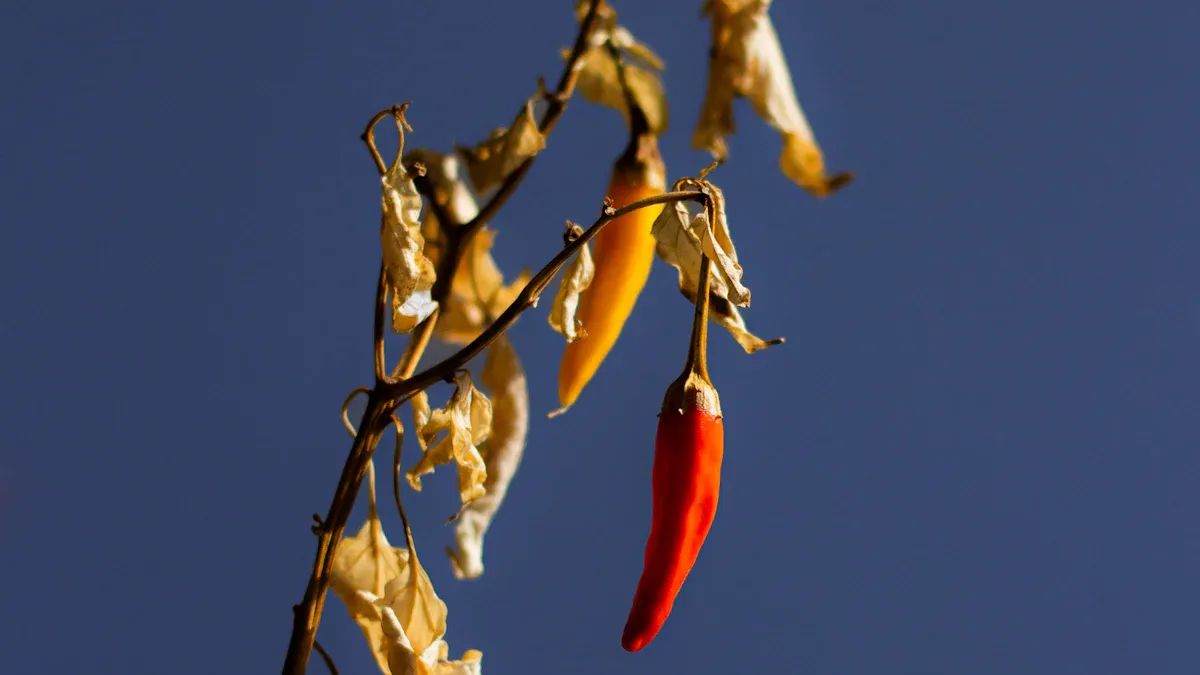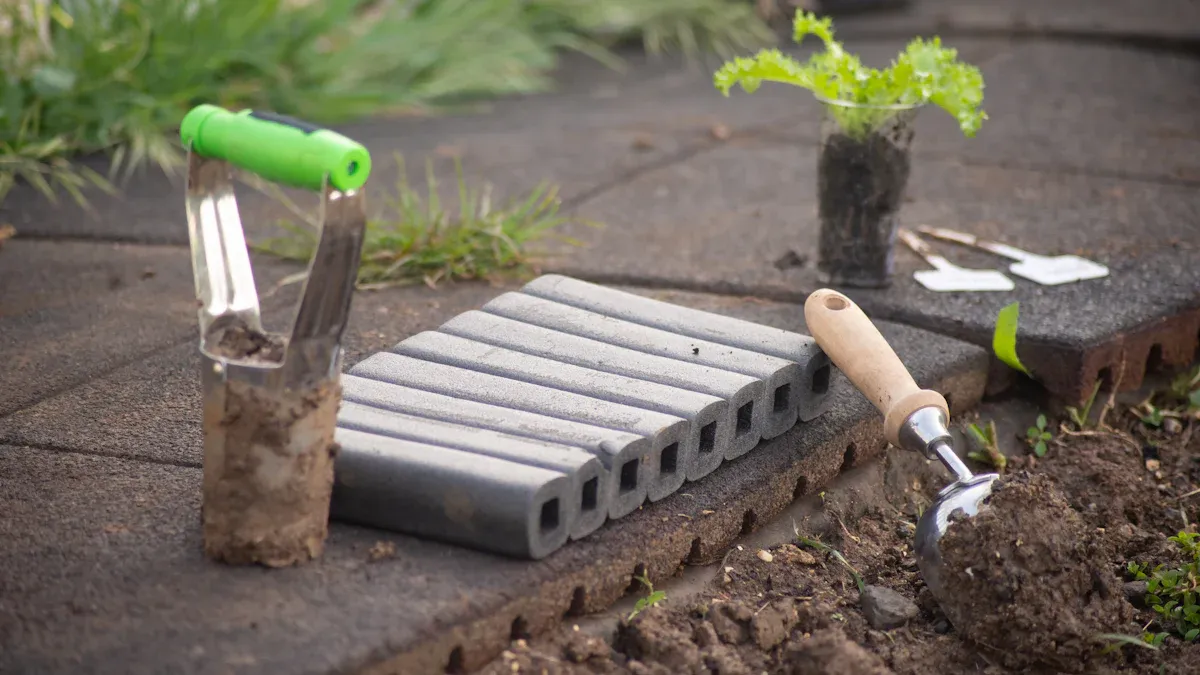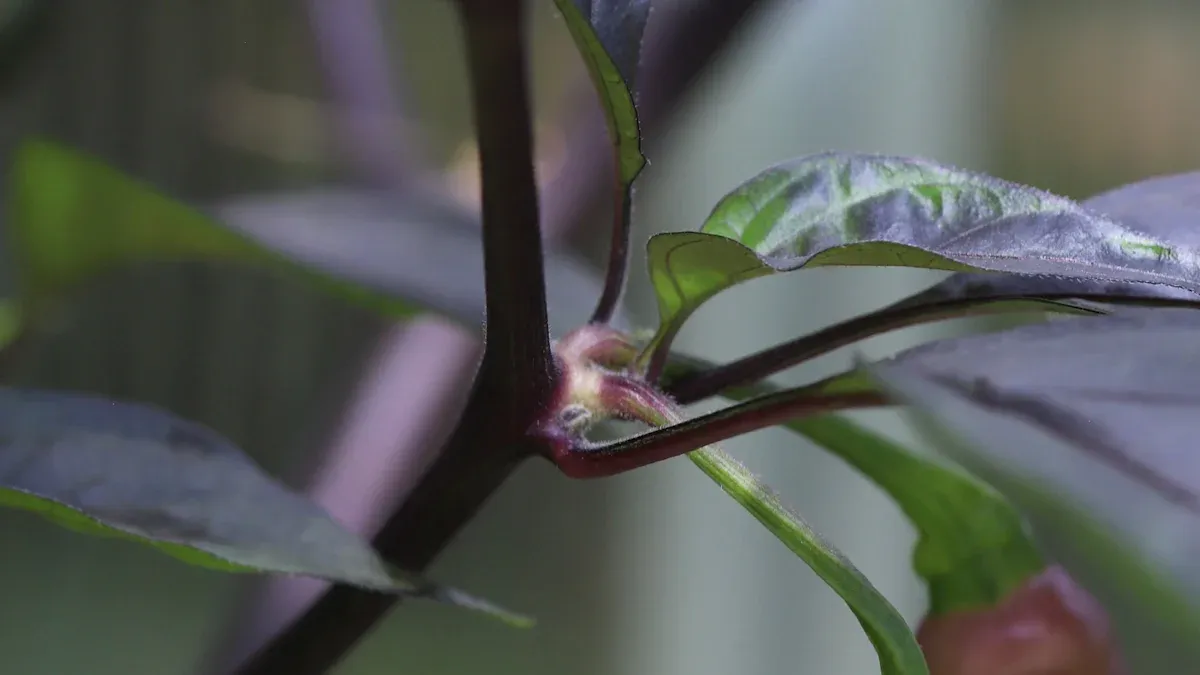
The roots and stems of the thai chili plant play a crucial role in its overall health and growth. Healthy roots absorb essential nutrients and water, while strong stems support the plant structure. When you provide proper care, you can expect better yields and vibrant plants. Understanding these components will help you cultivate a thriving chili garden at home.
Key Takeaways
Healthy roots are vital for nutrient and water absorption. Ensure your Thai chili plants have enough root space to thrive.
Strong stems support plant structure and stability. Use pruning and staking techniques to strengthen your chili plants.
Manage moisture carefully. Follow a consistent watering schedule based on the growth stage to prevent root rot and promote healthy growth.
Use well-draining, nutrient-rich soil for optimal root development. A mix of potting soil and compost works best.
Stay vigilant for common issues like root rot and weak stems. Early detection and proper care can save your plants.
Roots Overview

Developing Roots from Stems
The roots of the Thai chili plant develop from the stem through a process called adventitious rooting. This means that roots can grow from parts of the plant other than the primary root system. When you propagate chili plants from cuttings, you can encourage root growth by placing the cuttings in water or moist soil.
To promote healthy root development, consider these tips:
Use clean, sharp tools when taking cuttings to prevent disease.
Keep the cuttings in a warm, humid environment to encourage root formation.
Monitor moisture levels to avoid overwatering, which can lead to rot.
As roots grow, they create a network that helps the plant absorb nutrients and water efficiently.
Importance of Root Space
Providing adequate root space is essential for the growth of your chili plants. When roots have room to expand, they can access more nutrients and water. Here are some key points to consider:
Root competition: If you plant multiple chili varieties too close together, their roots will compete for resources. This can stunt growth and reduce yields.
Soil structure: Well-aerated soil allows roots to spread easily. Compacted soil can hinder root growth and limit nutrient uptake.
Water potential gradient: Roots create a water potential gradient by drying the rhizosphere, which facilitates water uptake from wetter areas. This process is crucial for maintaining hydration in your plants.
Additionally, root hairs play a significant role in nutrient absorption. They modify the rhizosphere to enhance hydraulic conductivity, making it easier for the plant to take in essential nutrients. However, be aware that root-knot nematodes can impair the roots’ ability to uptake nutrients and water, leading to poor growth and yield losses in your chili plants.
By ensuring your Thai chili plants have enough root space and healthy soil, you set the stage for robust growth and a bountiful harvest.
Stems Overview

Strengthening Stems for Growth
Strong stems are vital for the overall health of your Thai chili plant. They provide support and stability, allowing the plant to grow upright and access sunlight effectively. To strengthen the stems during early growth stages, consider these techniques:
Prune the plant down to about five nodes. This encourages new branches and enhances stability.
Repot into a larger pot with proper drainage and nutrient-rich soil. This promotes stem thickening.
Stake the plant and use a fan to simulate wind. This helps strengthen the stem by mimicking natural conditions.
Cut the tops off to prevent excessive height. Use a three-point staking method for strong winds.
Remove bottom leaves and repot higher up the stem. This encourages root growth and sturdiness.
Implementing these techniques will help you cultivate robust stems that can support the weight of the plant and its fruit.
Role of Stems in Root Development
The health of the stems directly impacts the efficiency of water and nutrient delivery to the roots of your Thai chili plant. Healthy stems facilitate the transport of essential nutrients from the soil to the roots. When stems are strong, they can better support the plant’s structure, allowing for optimal growth.
Using products like MicrobeBio® Rhizo Activator™ can enhance root growth and microbial activity. This product stimulates beneficial soil microbes, creating a network that increases root mass. As a result, your plant can access more nutrients and water, leading to improved drought tolerance and reduced irrigation needs. This ultimately supports better plant health and higher yields.
By focusing on strengthening the stems and understanding their role in root development, you can ensure your Thai chili plants thrive and produce a bountiful harvest.
Care Tips for Growing Chili Peppers
Moisture Management
Proper moisture management is crucial for the health of your Thai chili plant. Watering practices can significantly affect root health and overall plant growth. Here are some best practices to follow:
Water Management Practices by Growth Stage:
Growth Stage
Water Management Practices
Establishment
Use low amounts of water; reduce drastically after establishment to encourage deep root growth.
Vegetative Growth
Double the water usage compared to the establishment stage.
Fruit Set
Highest water usage during the crop’s lifespan.
Ripening and Harvesting
Water usage starts to decrease as the load on the plant is very high.
Maintaining the right moisture levels helps your chili plants thrive. Insufficient or excessive watering can weaken plant defenses, making them more susceptible to pests and diseases. Shallow watering can also deteriorate the physiological status of the plant, exacerbating disease severity. To avoid these issues, ensure you follow a consistent watering schedule that aligns with the growth stage of your plants.
Planting Techniques for Strong Roots
Strong roots are essential for healthy chili plants. You can promote robust root systems by following these planting techniques:
Use potting soil or seed starting soil for better moisture retention.
Germinate seeds in individual containers to avoid overcrowding, which promotes stronger growth.
Utilize peat pellets for quick germination by providing a warm, humid environment.
Ensure proper watering to keep the soil moist but not overly saturated.
These techniques help create an optimal environment for your chili plants. When you provide the right conditions, you encourage strong root development, which leads to healthier plants and better yields. Remember, the foundation of successful gardening lies in the care you give to your seeds and soil.
By focusing on moisture management and employing effective planting techniques, you can set your Thai chili plants up for success. Healthy roots and proper hydration will lead to a bountiful harvest.
Common Issues with Pepper Plants
Signs of Root Rot
Root rot is a serious issue that can affect your Thai chili plants. You can identify root rot by observing several key signs:
Wilting leaves: Even with adequate watering, leaves may droop.
Stem discoloration: Look for dark brown areas at the base of the stem.
Shrinking stems: The stem base may shrink, leading to instability.
Plant collapse: In severe cases, the plant may fall over and die.
Common pathogens like Phytophthora capsici, Rhizoctonia solani, and Fusarium spp. cause root rot. These pathogens thrive in overly wet soil conditions. To prevent root rot, ensure proper drainage and avoid overwatering.
Tip: Regularly check your soil moisture levels. Use your finger to test the top inch of soil. If it feels wet, hold off on watering.
Addressing Stem Weakness
Weak stems can hinder the growth of your chili plants. You might notice that your plants lean or fall over. This can happen due to several factors:
Insufficient light: Ensure your plants receive enough sunlight. Lack of light can cause weak, leggy growth.
Overcrowding: If you plant too many seeds close together, they will compete for resources. This can lead to weak stems.
Inconsistent watering: Fluctuations in moisture can stress the plant, leading to weak stems.
To strengthen your plants, consider staking them for support. Pruning can also help by encouraging bushier growth.
Note: Always use clean tools when pruning to prevent disease spread.
By recognizing these issues early, you can take action to protect your Thai chili plants. Healthy roots and strong stems are essential for thriving pepper plants and a successful harvest.
In summary, understanding the roots and stems of your Thai chili plants is essential for successful gardening. Healthy roots absorb nutrients and water, while strong stems support plant structure. To maximize growth and yield, follow these best practices:
Maintain consistent soil moisture without over-saturation.
Implement organic pest management techniques.
Optimize soil by incorporating organic matter.
By applying these strategies, you can cultivate robust plants and enjoy a bountiful harvest of peppers. Remember, the foundation of a successful crop lies in the care you provide to your seeds and soil.
FAQ
How often should I water my Thai chili plants?
Water your Thai chili plants when the top inch of soil feels dry. During the vegetative stage, increase watering frequency. Adjust based on weather conditions and plant growth.
What type of soil is best for Thai chili plants?
Use well-draining, nutrient-rich soil for your Thai chili plants. A mix of potting soil and compost works well. This combination promotes healthy root development and moisture retention.
How can I tell when to harvest fresh chili peppers?
Harvest fresh chili peppers when they reach their full color and size. The peppers should feel firm and slightly glossy. Regularly check for ripeness to enjoy the best flavor.
What pests should I watch for with chili plants?
Common pests include aphids, spider mites, and whiteflies. Regularly inspect your plants for signs of infestation. Use organic pest control methods to protect your chili plants.
Can I grow Thai chili plants indoors?
Yes, you can grow Thai chili plants indoors. Ensure they receive plenty of sunlight, ideally 12-16 hours daily. Use grow lights if natural light is insufficient.

